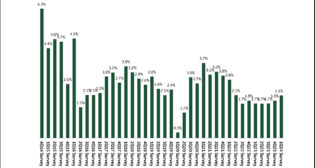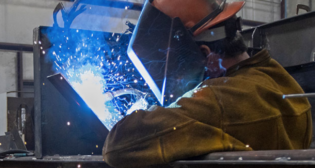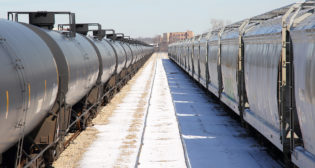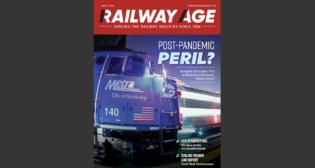
Cowen: GATX “well positioned to compete”
Written by William C. Vantuono, Editor-in-Chief
Following a meeting with GATX CFO and EVP Robert Lyons and Director of Investor Relations Jennifer McManus, Cowen and Company analyst Matt Elkott “came away with reinforced confidence that this is one of the railcar leasing market's best operators … well-positioned to compete.“
“GATX possesses a heightened ability to identify emerging industry trends and to navigate cycles,” Elkott says. “This view appeared to be shared by those investors who know the company well.”
Lyons and McManus acknowledged continued demand strength for frac sand cars, but noted that the overall railcar market is not going to recover solely based on this one car type. As well, proliferation of Permian Basin brown sand, which can be moved short-haul via truck, “could pose a threat to Northern white sand, which moves on rail,” Elkott notes. “The company is not seeing much of this switch happening right now, but such a switch could accelerate in the next couple of years. We do not think that this phenomenon would cause demand for small-cube covered hoppers to suddenly fall off a cliff. Instead, we could see a gradual moderation.”
Demand for cement, which uses identical railcars, appears solid, and if the federal government passes a large infrastructure bill, it would prompt additional growth. “All in all, we expect small-cube covered hopper demand to continue to be elevated for the foreseeable future,” Elkott says. ‘GATX currently has just under 3,000 small-cube covered hoppers in frac sand service and a roughly similar number serving other commodities. While management tends to be long-term oriented in its strategic decisions and often resists responding to market trends it may not deem sustainable in the long term, we would not be surprised if the company adds measurably to its small covered hopper fleet in the coming quarters, as this is a high utility equipment type that has multiple uses and is easy to re-purpose.”
GATX management said that investor interest in leased railcar assets remains high. As more investors enter this market or increase their presence in it, “competitive pressure could intensify,” Elkott saiD. “GATX can compete with this type of asset holder effectively due to its strong and reliable service offering. The company has an extensive service footprint in North America and 118 years of experience. This has helped it cultivate deep customer relationships. GATX’s top ten customers have been with the company for 45 years on average.”
Elkott observes that GATX’s chief competitors are practicing disciplined fleet management, refraining from placing large orders for new railcars. Other than for frac sand cars, GATX isn’t receiving major inquiries. Legacy crude oil tank cars and coal cars remain under pressure, but scrapping this older equipment should help demand for replacement equipment over the next couple of years. It’s possible that 20,000 to 24,000 coal cars could be scrapped during this period. Demand for plastic pellet cars could increase from projects coming online, “but that has not begun to materialize in a big way from GATX’s perspective,” Elkott notes.
GATX’s European railcar leasing business, which consists mostly of tank cars on shorter-term leases, has been “resilient and stable, as the market does not typically get overbuilt,” Elkott says. “Lease rates are also not very volatile.”
Cowen is maintaining its 2017 and 2018 EPS estimates of $4.60 and $4.20, respectively, for GATX. “Our $63 price target remains intact based on the same 15x multiple applied to our 2018 EPS estimate,” he says. “We maintain our Market Perform rating as we believe material share price upside is limited in the near term. However, the stock could still look attractive to patient, long-term investors.”
GATX’s 2Q17 EPS from continuing operations was $1.32, “well above our and consensus estimates of $1.13 and $1.11, respectively, at the time of the earnings release,” Elkott says. “The beat was in part driven by higher-than-expected remarketing income. The company still expects full year Rail North America remarketing income to be in the $35 million to $40 million range. It is now at $32 million for the first half of the year. As such, earnings in the second half of 2017 should be well below those of the first half. We are modeling for sequential quarterly EPS declines for the remainder of the year. GATX’s fleet utilization decreased slightly from 99.1% in 1Q17 but remained at a strong 98.8% at the end of 2Q17.
“The company continues to impress on this front despite still sluggish demand and relatively low railcar utilization in the industry. This achievement is in great part attributable to management’s decision not to invest as heavily in energy equipment as some of its competitors did during the crude-by-rail boom, which experienced a sharp decline beginning late 2014. The slight utilization decrease in 2Q17 should not have come as a surprise to anyone as the company had previously noted it expected utilization to be down somewhat for the full year.”



